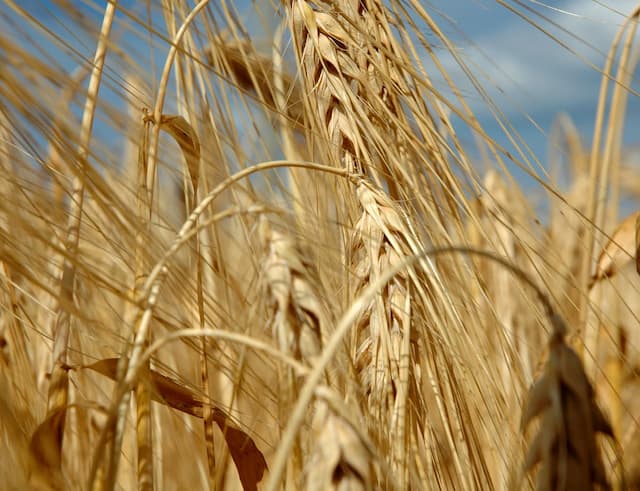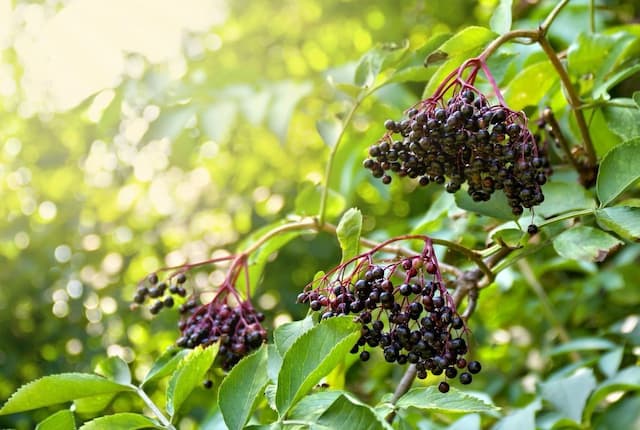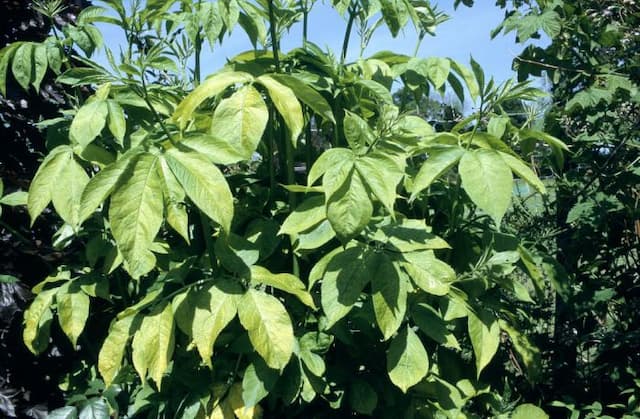Viburnum × bodnantense

ABOUT
The plant known as Bodnant Viburnum is a deciduous shrub that boasts a multi-season display. During the winter months, it shines with densely clustered, fragrant, and small pink flowers that eventually mature into white. Its branches are typically upright and slender, creating an open, yet somewhat dense form. These flowers provide a striking contrast against the backdrop of its dark green leaves, which have a broadly ovate shape and serrated edges. In the fall, the foliage transitions into a beautiful display with shades of purple and red, adding a warm touch to the garden as the temperatures drop. After flowering, the plant produces small, oval-shaped red berries that gradually change to black, offering visual interest and attracting birds.
About this plant
 Names
NamesSynonyms
Bodnant Viburnum, Arrowwood.
Common names
Viburnum × bodnantense.
 Toxicity
ToxicityTo humans
Bodnant viburnum is not considered highly toxic to humans. However, like many plants, it may cause mild stomach upset if ingested. Symptoms could include nausea, vomiting, or diarrhea. It is always advisable to keep any garden plant out of reach of children who might ingest plant parts out of curiosity.
To pets
Bodnant viburnum is generally not considered highly toxic to pets either. If ingested in large quantities, it might lead to gastrointestinal disturbance such as vomiting or diarrhea in animals similar to humans. It is always prudent to prevent pets from eating garden plants to avoid any potential adverse reactions.
 Characteristics
CharacteristicsLife cycle
Perennials
Foliage type
Deciduous
Color of leaves
Green
Flower color
Pink
Height
6-10 feet (1.8-3 meters)
Spread
4-8 feet (1.2-2.4 meters)
Plant type
Shrub
Hardiness zones
5-9
Native area
Hybrid
Benefits
 General Benefits
General Benefits- Winter Interest: Viburnum × bodnantense blooms in the winter months when few other plants do, adding color and vibrancy to the garden.
- Aesthetic Appeal: With its beautiful pink to white fragrant flowers, it provides visual interest throughout its blooming season.
- Attracts Wildlife: The plant's flowers attract pollinators like bees, and its berries are a food source for birds.
- Privacy Screen: It can be used as a hedge or screening plant, providing privacy and wind protection.
- Low Maintenance: This shrub requires minimal care once established, making it ideal for gardeners of all skill levels.
- Hardy Nature: Viburnum × bodnantense is known for its hardiness and can withstand harsh winter conditions well.
- Seasonal Variety: The plant offers seasonal variety, from its winter blooms to its lush green foliage in the summer and vibrant autumn colors.
 Medical Properties
Medical PropertiesThis plant is not used for medical purposes.
 Air-purifying Qualities
Air-purifying QualitiesThis plant is not specifically known for air purifying qualities.
 Other Uses
Other Uses- Viburnum × bodnantense, also known as Bodnant viburnum, can be used in floral arrangements, especially during winter when its flowers are in bloom, adding fragrance and color to bouquets and indoor decorations.
- The dense and robust nature of Bodnant viburnum makes it suitable as a privacy screen or hedge in residential landscapes, often providing a visual barrier between properties.
- The plant can serve as a windbreak in gardens and agricultural fields, helping to protect smaller, more delicate plants from strong winds.
- It can be planted near beekeeping areas as its flowers are a source of nectar and pollen, supporting bee populations and other beneficial pollinators during its flowering season.
- The Bodnant viburnum's sturdy branches can be used in creative arts and crafts, such as the making of rustic wreaths and other decorative items.
- This plant can be used in educational settings, such as biology classes, to teach students about plant propagation and growth habits, especially regarding deciduous plants.
- Its attractive foliage and structured growth habit make Bodnant viburnum a suitable subject for botanical illustration and plant photography enthusiasts.
- Due to its adaptability and hardiness, the Bodnant viburnum can be used in urban landscaping projects to beautify public spaces and increase green coverage in cities.
- The plant offers a shelter and food source for birds, especially during winter months, as birds can eat the berries once they have softened in late winter.
- Bodnant viburnum can be used in permaculture designs as part of a food forest or as a companion plant, providing multiple ecological benefits within a sustainable garden ecosystem.
Interesting Facts
 Feng Shui
Feng ShuiThe Bodnant Viburnum is not used in Feng Shui practice.
 Zodiac Sign Compitability
Zodiac Sign CompitabilityThe Bodnant Viburnum is not used in astrology practice.
 Plant Symbolism
Plant Symbolism- Renewal: Viburnum × bodnantense, commonly known as Bodnant Viburnum, often blooms in the late winter or early spring, symbolizing the renewal and the promise of new beginnings that come with the ending of winter.
- Persistence: Its ability to flower during the colder months, often when there's still the presence of frost, makes it a symbol of persistence and endurance through hard times.
- Beauty: With its clustered pink flowers which are both fragrant and appealing, Bodnant Viburnum represents beauty and elegance, reminding us to appreciate aesthetic pleasures in our surroundings.
- Transformation: The Bodnant Viburnum’s transition from deep pink buds to paler pink or almost white blossoms as they mature is symbolic of transformation and change, illustrating life's constant evolution.
 Water
WaterFor Bodnant viburnum, it's important to water deeply to ensure the root system receives adequate moisture. During the first growing season, water the plant once a week with about 1.5 gallons per application to establish a strong root system. Once established, reduce watering to every two to three weeks, adjusting for rainfall, and provide around 2 gallons each time. During periods of drought, increase the frequency of watering to prevent stress. Over-watering should be avoided to prevent root rot, so ensure the soil is well-draining and water only when the top inch of soil becomes dry.
 Light
LightBodnant viburnum thrives in full sun to partial shade conditions. The ideal spot for planting this shrub is one where it can receive at least six hours of direct sunlight daily. If positioned in too much shade, the plant might not flower as profusely. However, in very hot climates, some afternoon shade will help protect the plant from the intense heat.
 Temperature
TemperatureBodnant viburnum does well in a range of temperatures and is quite cold hardy. It can tolerate temperatures as low as -10°F and as high as 95°F. The ideal temperature range for thriving growth is between 60°F and 75°F. Extreme temperature fluctuations should be avoided to prevent stress on the plant.
 Pruning
PruningPrune Bodnant viburnum to maintain shape and encourage bushier growth. The best time to prune is immediately after the flowers fade in late spring. Thinning out old and crossing branches annually will help to increase air circulation and light penetration within the canopy, which can minimize the risk of disease. Major pruning should be done every few years to rejuvenate older shrubs.
 Cleaning
CleaningAs needed
 Soil
SoilBodnant Viburnum thrives in well-drained, moderately fertile soil. A mix of loam, sand, and organic compost is ideal for this shrub. The soil pH should be slightly acidic to slightly alkaline, ranging from 5.6 to 7.5 for optimal growth.
 Repotting
RepottingBodnant Viburnum, being a large shrub, is not typically repotted as it's commonly grown in the ground. If container-grown, repotting every 2-3 years in spring can help refresh the soil.
 Humidity & Misting
Humidity & MistingBodnant Viburnum is adaptable to a wide range of humidity levels and does not require specific humidity conditions, making it suitable for most garden environments.
 Suitable locations
Suitable locationsIndoor
Bodnant Viburnum is too large for indoor growth.
Outdoor
Plant in well-drained soil with full sun to partial shade.
Hardiness zone
5-9 USDA
 Life cycle
Life cycleThe common name of Viburnum × bodnantense is Bodnant Viburnum. The life cycle begins with germination from seed, though it is typically propagated via cuttings to maintain its hybrid characteristics. Once established, it enters a vegetative stage, forming a deciduous shrub with upright growth. It blooms in late winter to early spring with fragrant pink flowers, before the leaves appear. Following flowering, it enters the fruiting stage, producing small, dark, inedible berries that mature by late summer. Over the years, it can become a sizable shrub, and with proper care, Bodnant Viburnum can live and flourish in a garden for many years, sometimes decades, sometimes requiring pruning to maintain shape and promote vigorous growth.
 Propogation
PropogationPropogation time
Late Winter to Early Spring
Viburnum × bodnantense, commonly known as Bodnant Viburnum, can be propagated through semi-hardwood cuttings. The ideal time to take these cuttings is during the late summer months. To propagate with this method, cut a healthy piece of semi-hardwood that includes several leaf nodes, roughly 4 to 6 inches (about 10 to 15 centimeters) long. Remove the leaves from the lower half of the cutting and dip the end into rooting hormone to encourage root growth. Then, insert the cutting into a pot filled with a well-draining planting medium, such as a mix of peat and perlite or sand. Place the pot in a location with indirect light and keep the medium consistently moist until roots have established, usually in a few weeks to months. Covering the pot with a plastic bag can help maintain humidity levels favorable for rooting.



![Elder [Black Tower]](/_next/image?url=https%3A%2F%2Fplants-admin.emdemapps.com%2Fimages%2Fplants%2F%2Fimages%2F604b5cad99578.png&w=640&q=75)





